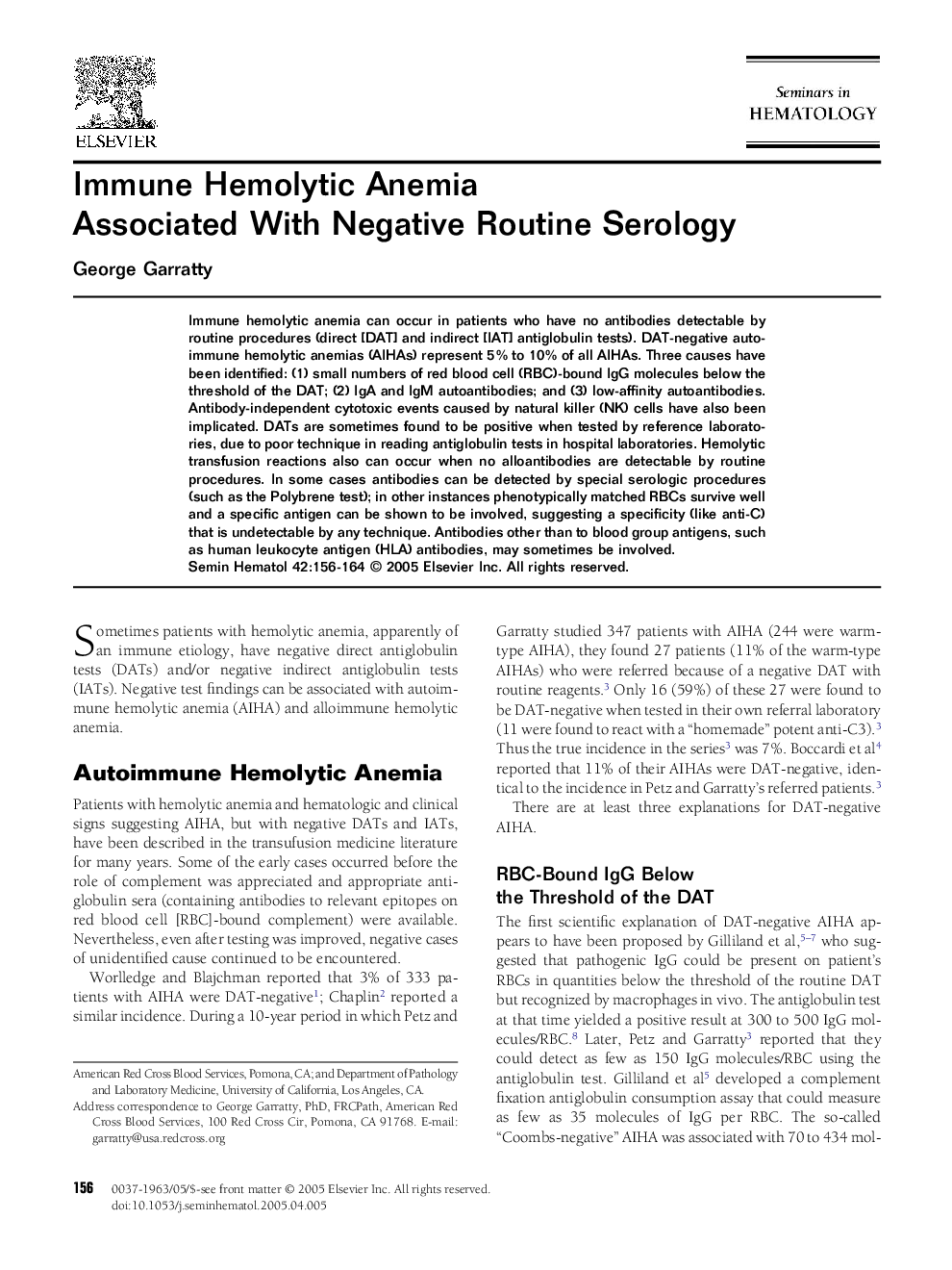| Article ID | Journal | Published Year | Pages | File Type |
|---|---|---|---|---|
| 9258380 | Seminars in Hematology | 2005 | 9 Pages |
Abstract
Immune hemolytic anemia can occur in patients who have no antibodies detectable by routine procedures (direct [DAT] and indirect [IAT] antiglobulin tests). DAT-negative autoimmune hemolytic anemias (AIHAs) represent 5% to 10% of all AIHAs. Three causes have been identified: (1) small numbers of red blood cell (RBC)-bound IgG molecules below the threshold of the DAT; (2) IgA and IgM autoantibodies; and (3) low-affinity autoantibodies. Antibody-independent cytotoxic events caused by natural killer (NK) cells have also been implicated. DATs are sometimes found to be positive when tested by reference laboratories, due to poor technique in reading antiglobulin tests in hospital laboratories. Hemolytic transfusion reactions also can occur when no alloantibodies are detectable by routine procedures. In some cases antibodies can be detected by special serologic procedures (such as the Polybrene test); in other instances phenotypically matched RBCs survive well and a specific antigen can be shown to be involved, suggesting a specificity (like anti-C) that is undetectable by any technique. Antibodies other than to blood group antigens, such as human leukocyte antigen (HLA) antibodies, may sometimes be involved.
Related Topics
Health Sciences
Medicine and Dentistry
Hematology
Authors
George Garratty,
